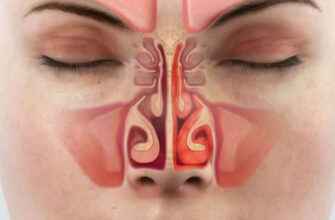Sciatica is a condition that affects the sciatic nerve, which is the largest nerve in the body. The sciatic nerve runs from the lower back through the hips and down each leg, providing feeling and motor function to the lower extremities. In this article, we will discuss the symptoms, causes, diagnosis, and treatment options for sciatica.
Symptoms
The most common symptom of sciatica is pain that radiates from the lower back, through the hips and buttocks, and down one or both legs. This pain can range from mild to severe and can be accompanied by numbness, tingling, or weakness in the affected leg.
Causes
Sciatica is caused by compression or irritation of the sciatic nerve. This can be due to a variety of factors, including a herniated disc, spinal stenosis, degenerative disc disease, or spondylolisthesis. In rare cases, sciatica can be caused by a tumor or infection.
Diagnosis
To diagnose sciatica, your doctor will perform a physical exam and ask about your symptoms. They may also order imaging tests, such as an X-ray or MRI, to confirm the diagnosis and identify the underlying cause of your symptoms.
Treatment
Treatment for sciatica typically involves a combination of pain relief and physical therapy. Pain relief options may include over-the-counter or prescription medications, such as nonsteroidal anti-inflammatory drugs (NSAIDs) or muscle relaxants. In severe cases, epidural steroid injections may be recommended.
Physical Therapy
Physical therapy can help relieve pain and improve mobility by strengthening the muscles in your back and legs. Your physical therapist may recommend exercises to improve flexibility, reduce stiffness, and improve your posture. They may also recommend hot or cold therapy, massage, or electrical stimulation.
Surgery
In rare cases, surgery may be necessary to relieve the pressure on the sciatic nerve. This may involve removing part of a herniated disc, widening the spinal canal, or correcting a spinal deformity.
Prevention
To prevent sciatica, it is important to maintain a healthy weight, exercise regularly, and practice good posture. Avoid sitting for long periods of time and take frequent breaks to stretch and move around. If you have a job that requires you to sit for long periods of time, consider using a standing desk or taking frequent breaks to stand and stretch.
Alternative Therapies
In addition to traditional medical treatments, some people with sciatica find relief through alternative therapies such as acupuncture, chiropractic care, or yoga. While there is limited scientific evidence to support these therapies, many people find them helpful for managing their symptoms.
Medications
Over-the-counter pain relievers such as acetaminophen or ibuprofen can help relieve mild to moderate pain. In more severe cases, prescription medications such as muscle relaxants or opioid painkillers may be necessary. However, it is important to use these medications under the guidance of a doctor, as they can be addictive and have potentially dangerous side effects.
Lifestyle Changes
In addition to exercise and good posture, making lifestyle changes such as quitting smoking or reducing alcohol consumption can help improve overall health and reduce the risk of developing sciatica.
Conclusion
Sciatica can be a painful and debilitating condition, but with proper diagnosis and treatment, most people are able to manage their symptoms and regain their mobility. If you are experiencing symptoms of sciatica, it is important to consult with your doctor to determine the underlying cause and develop a treatment plan that works for you. This may involve a combination of medication, physical therapy, lifestyle changes, and alternative therapies.
It is also important to remember that prevention is key when it comes to sciatica. By maintaining a healthy weight, practicing good posture, and staying active, you can reduce your risk of developing this condition.
In summary, sciatica is a common condition that affects the sciatic nerve, causing pain, numbness, and weakness in the lower back, hips, and legs. While the underlying causes of sciatica can vary, most people are able to manage their symptoms with a combination of medication, physical therapy, and lifestyle changes. If you are experiencing symptoms of sciatica, it is important to consult with your doctor to develop an individualized treatment plan that meets your needs.











